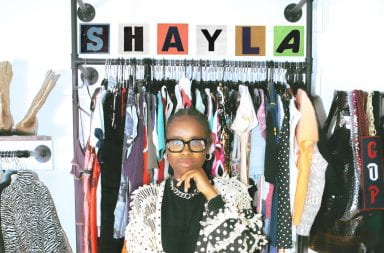
Safe zone training is now being offered through the Multicultural Center in the Ohio Union. Credit: Stewart Blake | Lantern Reporter
On a campus full of varying beliefs, ideologies and biases, creating familiar and safe areas for students who might face discrimination has become a goal of many Ohio State initiatives.
To promote and ensure an atmosphere that prides itself on diversity and inclusion for all, safe-zone training is now being offered through the Multicultural Center in the Ohio Union, according to the program’s website.
The project’s focus is on community strength and creating a path for awareness surrounding lesbian, bisexual, gay, transgender, queer, questioning, intersex, asexual, and pansexual people, according to the website.
The trainings contain a variety of techniques to promote awareness, including encouraging becoming allies with LGBTQ persons, a training manual for future use and discussion among trainees.
Participants learn about the LGBTQ communities they might interact with to learn how to become a better ally.
The third training of the 2017-18 academic year was held Tuesday for staff, faculty and students. Exercises highlighted how easy it is to feel rejection or lose equity in life as a result of simply being LGBTQ.
“I feel like I learned a great deal about the community that I didn’t know, especially a lot of terminology that I was unaware of,” said Kayli Jack, an employee within the College of Engineering.
“My favorite part of the training was an activity that we did. It was a sort of coming-out activity,” Jack said.
The activity focused on many negative events an LGBTQ person might face after coming out.
The group leader assigned a star to each individual present, with each point of the star representing a meaningful object in life, like a sister, job, friend or parent.
The objects were represented by a color on each point, and when a color was called out, the participant would lose the thing it represented, demonstrating what it’s like to lose a family member, friend or job after coming out.
Avanti Vaidya, a fourth-year in biology, also said the exercise was her favorite.
“I was one of the few within the LGBTQ community that didn’t lose any of my points,” Vaidya said. “Watching others that lost their jobs, their friends, their families and more because of whatever scenario was very impactful to watch.”
As the exercise continued, more participants were forced to part with certain aspects of their star, all of which were essential to them.
“For example, [a point on the star] was my sister and I had to cut ties with my sister and it was extremely eye-opening,” Jack said.
According to the website, “educational formats, including informational pieces, activities and opportunities for self-reflection” are implemented during each training.
After completing the training, each participant is given a “Safe Zone” sticker, which is identified by its rainbow-colored graphic and bold text.
More training will take place starting next year, with the next one being Feb. 15.
“The biggest takeaway that I found was how to be really conscious of your privilege and your identities, and then two: to be a good ally really comes down to being who they need you to be and offering that support system they need,” Vaidya said.
“I would 100 percent recommend it.”


